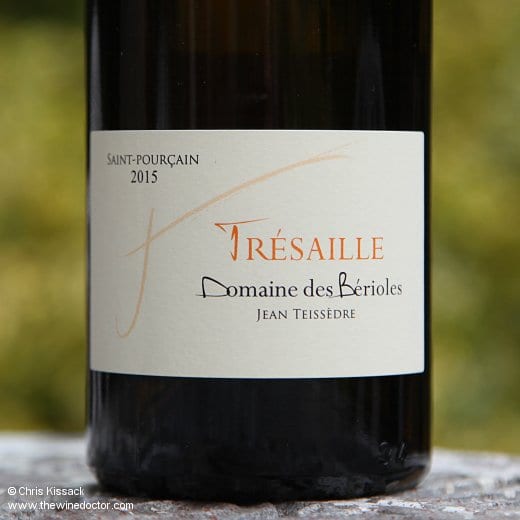Domaine des Bérioles Saint-Pourçain Trésaille 2015
“It is curious to note now fragile the memory is, even for the important times in one’s life.”
– Marcel Duchamp (1887 – 1968)
One hundred years ago, in 1917, painter and sculptor Marcel Duchamp secured his place in art history with the submission of Fountain to an exhibition held by the Society of Independent Artists. His new work was, in truth, little more than a urinal, submitted under the pseudonym Richard Mutt, and so perhaps we should not be surprised that it was rejected by the society’s committee. Despite this snub, Fountain has since come to be regarded as a landmark piece in 20th-century art. Later in life, while being interviewed by art historian Marcel Jean (1900 – 1993), Duchamp was reflecting on these events when he made what I consider to be one of his most pertinent of observations regarding the seemingly inherent weakness of human memory.
I have many fragile and fragmented memories. Fleeting glimpses of stony beaches from otherwise long-forgotten childhood holidays. Even some of my student adventures now seem just as ethereal as Marcel Duchamp’s art (his original Fountain was lost shortly after the exhibition, many suspect thrown out as rubbish). And some more recent memories seem equally fragile, in particular an evening I spent in a restaurant-come-bar called Un Brin Folk in Angers a few years ago; I was reminded of that evening earlier this year when, by chance, I passed the same restaurant on my way to dinner. I had thought, when I walked into that restaurant some years ago, that because I was familiar with Sancerre, Chinon, Muscadet, Vouvray and the like, that I knew the wines of the Loire Valley. After an evening fuelled exclusively by Châteaumeillant, Côtes du Forez, Haut-Poitou and Saint-Pourçain, I realised in fact I knew very little.
Years later, subsequent efforts to remember which wines I had drunk that evening, and who had made them, provide robust evidence as to the wisdom of Duchamp’s musings. But what I can remember – with absolute certainty and crystal clarity – was that some of the wines were truly delicious. While fragile, the memory of that evening has driven me to explore these more peripheral appellations, turning most recently to Saint-Pourçain.

The vineyards of Saint-Pourçain once covered a great expanse of several thousand hectares, but phylloxera, war and a shift towards other more lucrative agricultural crops tossed the region into a long decline. Today, though, there has been a limited recovery. What vineyards remain lie either on the left bank of the Allier as it flows towards the town of Moulins, or further upriver on the left bank of the Sioule, a tributary of the Allier. These rivers flow generally northwards here, and thus the vineyards tend to have an east- and southeast-facing aspect. They are not far from many of the vineyards of Burgundy, being just 150 kilometres west of Mâcon, a fact which is reflected in Saint-Pourçain’s principal varieties, these being Pinot Noir and Gamay for reds, and Chardonnay for whites.
The latter of these three Burgundian varieties is joined by Sacy, known locally as Tressallier, a complementary grape in white blends accounting for a maximum 40% (in theory – more on this in a moment). It was once the dominant grape in the region, but went into decline under the influence of local wine authorities who encouraged the planting of Chardonnay in preference. When the region was eventually promoted from Vin Délimité de Qualité Supérieure to Appellation Contrôlée in 2009 Chardonnay had the upper hand, and today it accounts for up to 80% of any white blend. This is a great shame; only thirty-or-so hectares of Tressallier remain worldwide, the majority planted in Saint-Pourçain, and it is a unique selling point for the appellation. Happily (from my point of view anyway), both the vignerons and the wine authorities seem to be taking a relaxed approach to enforcing such rules, and it is not impossible to find wines which are either 100% Tressallier, or mostly Tressallier with just a soupçon of Chardonnay (or indeed the complete opposite, 100% Chardonnay with not even a hint of Tressallier).
Jean Teissèdre has about 3 hectares of Tressallier and 3 hectares of Chardonnay, and he has been vinifying the fruit of the family’s vines since calling their contract with the local cave cooperative to an end in 2010. In a very brief space of time he began turning out some remarkable wines – I tasted the entire range with him, his sister Sophie and brother-in-law Jérôme Roux (the three work together on the domaine) only a few weeks ago. The 2015 Saint-Pourçain Trésaille from Domaine des Bérioles has a pale, bright, lemon-fresh hue. The nose has a delightful fruit-rich freshness, with scents of melon and whitecurrant, with a slightly salty-savoury suggestion of minerals, and it has a vibrancy too, with a zesty vigour. The palate feels pure and defined, crammed with acid definition and a supple weight of fruit, a salad of melon slices and citrus segments, with a deliciously pithy bitterness. Bright and long in the finish, this is a wine of real charm, which worked very well with some grilled sea bass. 16.5/20
There is no point in me racking my brains regarding Un Brin Folk; I have long realised that I will never dig up the identity of those wines from the depths of my memory. But if I keep exploring these peripheral appellations, hopefully I will continue to discover new treats such as this. Saint-Pourçain, and Tressallier, are clearly worthy of further investigation (which I intend to do). Thank heavens that, unlike Duchamp’s Fountain, we did not lose it forever. (6/3/17)
Find Domaine des Bérioles Saint-Pourçain Trésaille 2015 on Wine Searcher: ![]()
